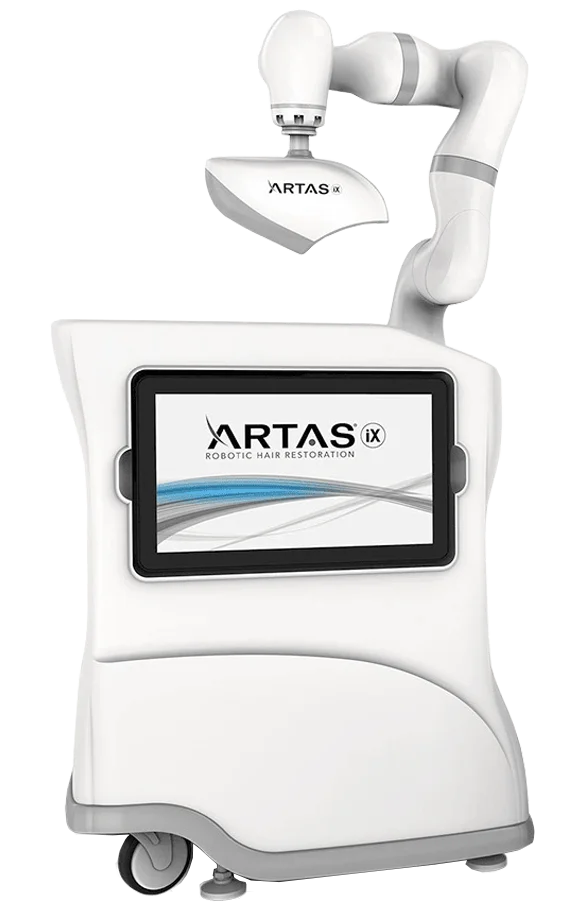About Hair Loss
Partner with Pizarro Hair Restoration and gain access to solutions expertly designed to target your specific hair loss condition.
Hair loss affects nearly 80 million adults, both men and women, in the United States.
Hair plays a significant role in shaping how we look and feel about ourselves. For many, it’s an essential part of self-expression and identity. More than the looks, our hair can also keep us warm and safe from the sun. However, as we age, we become more susceptible to health issues linked to hair loss, which can significantly impact our quality of life.
At Pizarro Hair Restoration, we understand that hair loss affects anyone, regardless of gender and age. This is precisely why we offer personalized solutions to help individuals understand their situation and find the best treatment for their hair restoration needs. With our expertise and experience, we guide our clients in their journey to overcoming hair loss.
Understanding the Causes of Hair Loss
Hair loss, known as alopecia, happens when the usual hair growth cycle is disturbed. It can manifest anywhere on the body, but it’s most common on the scalp, where there are around 100,000 hairs that go through three different phases:
- Anagen Phase - Hair actively grows, which can last for years.
- Catagen Phase - Hair stops growing and detaches from its follicle (the structure under the skin holding the hair). This phase lasts about ten days.
- Telogen Phase - The follicle takes a rest for a couple of months before the hair falls out. New hair then starts growing in the same follicle.
Any disruption to this cycle or harm to follicles can accelerate hair loss, resulting in signs such as a receding hairline, patchy hair loss, or overall thinning. While genetics can contribute to this condition, a range of medical and behavioral factors can also induce hair loss, including:
- Hormonal Changes Due to Aging and Health Concerns
- Specific Medications and Supplements
- Head Radiation Therapy
- Trauma and Stressful Events
- Specific Hairstyling Treatment
Recognizing the Types and Signs of Hair Loss
1. Androgenetic Alopecia
This pervasive hair loss affects more than 50 million men and 30 million women worldwide. It's hereditary and often referred to as male or female pattern hair loss. While it can't be completely prevented, it can be managed through medications or surgery.
Pizarro Hair Restoration offers optimal treatments catered precisely to address your specific needs. With over three decades of experience, we have successfully handled a diverse range of hair and scalp conditions, including:
- Male pattern hair loss typically starts after puberty and progresses gradually over years or decades. Hair loss begins around the temples and extends across the top of the head, often resulting in baldness. Some men experience a distinct ring of hair remaining along the lower scalp.
- Female pattern hair loss is associated with a general thinning of hair all over the scalp, usually without a receding hairline. Although hair loss is a natural part of aging, for women thinning can begin at any point after puberty but rarely leads to complete baldness.
2. Telogen Effluvium
Hair loss occurs when numerous follicles on the scalp enter a resting stage but don't proceed to the following growth phase. This results in widespread hair shedding, particularly noticeable at the crown and temples, yet it seldom leads to complete baldness.
3. Anagen Effluvium
This non-scarring type of rapid hair loss is commonly due to harsh medications or treatments such as chemotherapy. Strong medicines used for cancer treatment can destroy cancer cells but can also stop hair follicles from growing on the scalp and other body areas.
4. Alopecia Areata
Alopecia Areata is an autoimmune condition where the immune system targets healthy hair follicles, resulting in hair loss and preventing new hair growth. It often arises abruptly, causing small patches of hair to fall out on the scalp and potentially affecting eyebrows and eyelashes. Over time, it could progress to complete hair loss or baldness.
5. Hair Shaft Abnormalities
Different irregularities in the hair shaft can contribute to hair loss. These abnormalities weaken the strands, rendering them susceptible to breakage. Rather than originating within the follicle, this type of hair loss stems from fractures along the hair shaft, ultimately causing a reduction in hair volume and the development of fragile, brittle hair.
Coping with Hair Loss
Experiencing hair loss can be a challenging and emotional journey for many. Whether it’s due to genetics, medical conditions, or treatments, hair loss can significantly impact self-esteem, body image, and overall well-being. Fortunately, various strategies and treatment options are available to help individuals cope with hair loss:
1. Talk to professionals.
Consulting with a medical professional who specializes in hair loss can provide valuable insights into the underlying causes and available treatment options. They can help determine the best course of action based on your unique situation.
2. Delve into cosmetic solutions.
Wigs, hairpieces, and extensions offer customizable options to replicate your desired appearance. High-quality products are available in various styles, colors, and materials, allowing you to choose what feels most comfortable and natural to you.
3.Explore medication options.
Medications might be recommended to slow down further hair loss or stimulate regrowth. These can vary from over-the-counter products to prescription medications. Consult a professional to weigh the benefits and risks before starting any treatment.
4. Get started with hair loss treatments.
Advancements in medical technology have led to innovative hair restoration treatments. From gentle methods that encourage natural regrowth to advanced therapies targeting root causes of hair loss, these solutions offer hope for restoring your hair.




